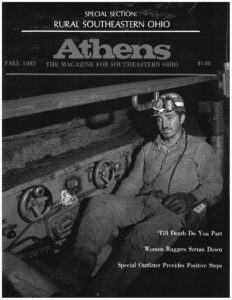Being a no-kill shelter difficult, but worth it
This year marks the 10-year anniversary of the Humane Society of the Ohio Valley’s dedication to being a no-kill shelter, a distinction we are proud of.
Being a no-kill shelter means we never euthanize an animal to save space. When we get over full, we can send animals to rescue organizations or to foster families.
Prior to 2013, entering the HSOV, like too many shelters nationwide, was a death sentence for many stray dogs and half of the cats that came through our doors.
Leadership changes, changes to outdated policies, and dedication to lifesaving has allowed HSOV’s save rate to climb from the 70% range to over 90% in 2013. It has stayed there every year, except 2019 when we took in a large hoarding case with many sick, not socialized cats.
Until 2011, we were taking in almost 4,000 animals each year, and euthanizing many healthy cats, and a few dogs. Regretfully, almost half of the cats to come into our shelter before 2012, never made it out alive.
Changes were made in our intake protocols, and fewer cats were taken in when we became full. We stopped euthanizing healthy, adoptable animals.
Today, animals are not euthanized unless they are deemed dangerous by the dog warden or by recommendation of our local veterinarians due to the animal’s quality of life.
Each year, we became more determined to save lives, not end them. We worked to increase adoptions and rescues, decrease and manage intake, and address medical and behavior issues as often as possible.
In 2015, we surrendered our euthanasia equipment and license. Our crematory was dismantled and turned into a food locker.
We are proud of our accomplishments, but still have so far to go. There is no time to stop and enjoy any successes. One hoarding case can push us into uncomfortable decisions or filling our shelter beyond comfort for animals or humans. Our hope is to keep the progress we have made — which is a full-time job.
But looking forward, we also are focusing on animal enrichment while the animals are in our care. We want to decrease our length of stay for dogs and cats. Not euthanizing is wonderful, but that means some dogs and cats wait a year or more for the perfect home. Enrichment helps but doesn’t take the place of a loving home.
The year 2019 challenged our “no-kill” commitment with large hoarding cases of sick, feral animals. Then 2020 brought challenges related to staffing and COVID. Last year, we became overly full, like most shelters and rescues nationwide.
We are looking forward to using the tactics we have learned during these challenges to have a great 2023. Our greatest challenges are lack of space in an older building and very small group of dedicated volunteers — too small to conquer all of the tasks needed to see our goals come to reality. We are also working to find and keep the right staff.
Our local pet store, WeLuvPets, invited us on to be an in-store adoption partner with their cat habitats. This experience has been amazing for our cats. We were able to reduce length of stay, reach more adopters, and share the love of our cats with our local WeLuvPets store associates. The pet store also helps us with birds and exotic animals we take in.
Post COVID, we were thrilled to be able to be in our community once again. Attending events like local craft shows, Marietta First Fridays and other community functions — we were excited to see animal lovers supporting shelter pets.
We recently invited directors from the Humane Society of the United States, Best Friends Animal Society, and the Ohio Animal Welfare Federation, to visit our shelter for a free consultation. They came to tour our shelter and offer their advice and resources.
Experimenting with surrender alternatives such as pet food banks, behavior advice, training and boarding all help keep animals in homes with owners rather than being “dumped” at the shelter.
Every animal is now spayed/neutered before they leave our facility. There are no more concerns about compliance rates of a voucher, and no nightmares of someone using our animals for breeding and puppy mills.
Every day at HSOV is a new adventure. We strive to continue progressing for the best quality of care and the most modern practices for animal sheltering.
HSOV is a private, tax-exempt organization which relies on compassionate donors for 80% of our funding. We are not a government agency, and do not receive general operating support from national organizations.
The no kill movement was making great progress pre-COVID — though it varied by area. On the east coast, the southern states are behind, while northern states excel at lifesaving. Recent setbacks have affected all areas.
Some 2.7 million missed spay/neuter surgeries during the early days of the COVID pandemic, when elective surgeries were mandatorily put on hold by states and spay/neuter fell into that category. The impact of those additional births obviously has exponential impact. A national veterinarian shortage and troubled economy helps to increase animal intake in animal shelters nationwide.
More than half of U.S. shelters are now no-kill, and the national save rate is 83%, up from 70% in 2016. More than 4.8 million more animals have been saved.



